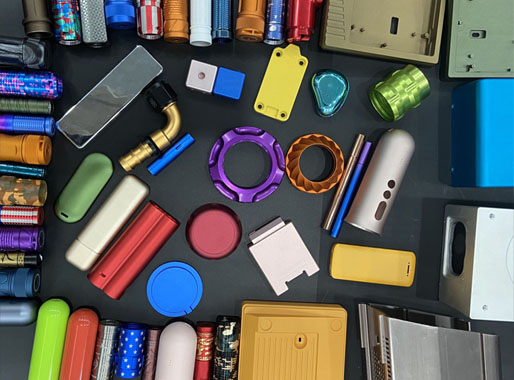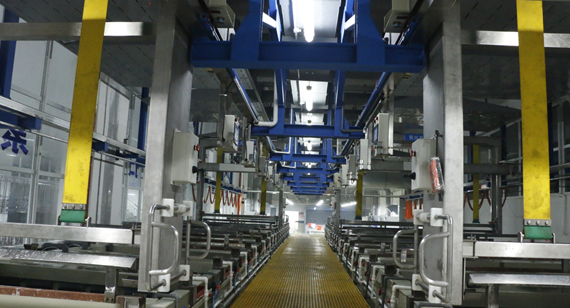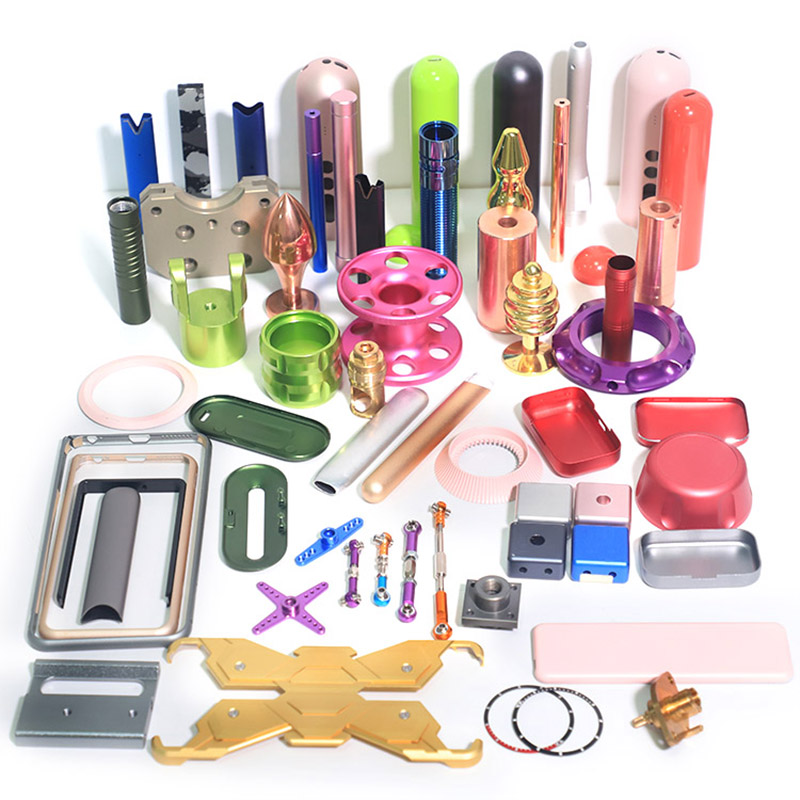15 years one-stop China custom CNC machining parts factory

Hey there I’m VMT Sam!
With 25 years of CNC machining experience we are committed to helping clients overcome 10000 complex part-processing challenges all to contribute to a better life through intelligent manufacturing. Contact us now
 172 |
Published by VMT at Jun 18 2024
172 |
Published by VMT at Jun 18 2024
Factors Affecting the Cost of Aluminum Anodizing
Introduction
Aluminum anodizing, as a widely used surface treatment technique, not only enhances the corrosion resistance and wear resistance of aluminum and aluminum alloy materials but also provides them with various aesthetic appearances. However, the cost of anodizing is influenced by multiple factors. This article will explore the advantages of aluminum anodizing, discuss the key factors determining its cost, and propose techniques to enhance the anodizing effect.

Basic of Anodizing Process
What is Aluminum Anodizing?
Aluminum anodizing is the process of electrochemically treating aluminum or aluminum alloy products as an anode in a specific electrolyte to form a dense layer of aluminum oxide film on the surface. This oxide film not only exhibits excellent corrosion resistance and wear resistance but also enhances the hardness and insulation of the material.

Types of Anodizing Processes
Anodizing processes can be classified into various types based on the different electrolytes used, including sulfuric acid anodizing, chromic acid anodizing, oxalic acid anodizing, and more. These different types of anodizing processes vary in cost, performance of the oxide film, and appearance.
Advantages of Anodizing Aluminum Parts
Durability: The surface oxide film of anodized aluminum has high hardness and wear resistance, capable of withstanding high flow usage and harsh environmental corrosion.
Chemical Resistance: The aluminum oxide film effectively resists corrosion from various chemicals, including acids, alkalis, and salts.
Paint Retention: The oxide film on anodized aluminum surfaces has excellent adhesion, preserving paint and other coatings effectively.
Environmentally Friendly: Anodizing process does not produce harmful substances, meeting environmental requirements.
Adhesive Options: Anodized aluminum surfaces are suitable for various adhesives, such as epoxy resins and polyurethanes, providing more options for subsequent processing and applications.
Aesthetics: The surface of anodized aluminum can present a colorful visual effect through methods like dyeing or painting, offering high decorative value.
Factors Determining the Cost of Anodizing Aluminum Parts

Coating Thickness: Coating thickness is one of the key factors influencing the cost of anodizing. Thicker coatings typically require longer processing times and more electrolytes, thus increasing costs.
Type of Anodizing Process: Different types of anodizing processes have variations in equipment, electrolytes, and energy consumption, leading to differences in costs. For example, sulfuric acid anodizing process tends to have lower costs compared to chromic acid anodizing process.
Size and Composition of Anodizing Aluminum Parts: The size and composition of aluminum parts also affect the cost of anodizing. Larger aluminum parts require more electrolytes and processing time, while aluminum parts containing different alloy elements may require specific processing conditions and chemical solutions, increasing costs.
Racks: Racks are important equipment in the anodizing process, used to carry aluminum parts and ensure their uniform distribution in the electrolyte. The design and quantity of racks also impact the cost of anodizing.
Additional Services: In addition to basic anodizing treatment, some customers may require additional services such as cleaning, pretreatment, and post-treatment, which also increase the cost of anodizing.
Techniques to Enhance Anodizing Effect
Know Your Alloy: Different aluminum alloys have different chemical compositions and physical properties, resulting in varied reactions to anodizing treatment. Therefore, understanding the type of alloy is crucial for selecting the appropriate anodizing process and parameters.
Remove Oil and Fingerprints: Oil and fingerprints on the surface of aluminum parts can affect the effectiveness and quality of anodizing. Therefore, thorough cleaning of the aluminum surface is necessary before anodizing to remove contaminants like oil and fingerprints.
Stay Informed of the Latest Developments: With the continuous advancement of technology and innovation in processes, anodizing techniques are also evolving. Staying informed about the latest developments and technological advancements in the field can help optimize anodizing processes and reduce costs.
VMT Anodizing Services
VMT Anodizing Services provides professional aluminum anodizing CNC machining services. We have advanced equipment and a skilled technical team capable of providing customers with high-quality and efficient anodizing processing services. Our services cover all aspects of aluminum anodizing, including process selection, parameter optimization, pretreatment, and post-treatment of aluminum CNC parts. Additionally, we offer customized anodizing services to meet the personalized needs of customers.

Conclusion
Aluminum anodizing, as an important surface treatment technique, plays a significant role in improving the performance and aesthetics of aluminum and aluminum alloy materials. However, the cost of anodizing is influenced by multiple factors. By understanding the basics of anodizing processes, mastering the key factors affecting costs, and adopting techniques to enhance effects, we can optimize anodizing processes and reduce costs. Furthermore, choosing a professional anodizing service provider and proper maintenance are crucial for ensuring the quality of anodizing and reducing costs. We hope this article provides you with a comprehensive understanding and guidance on the factors influencing the cost of aluminum anodizing.
FAQ
How to determine the coating thickness of aluminum anodizing?
The determination of coating thickness depends on the specific application needs and specification requirements of aluminum parts. Generally speaking, thicker coatings can provide better corrosion resistance and wear resistance, but they also increase costs and processing time. Therefore, it is necessary to consider both cost and performance requirements when selecting coating thickness.
How does the type of anodizing process affect the cost?
Different types of anodizing processes differ in terms of equipment, electrolyte, and energy consumption, so the cost will also vary. Choosing the right type of anodizing process requires comprehensive consideration of factors such as the material, shape, size, and application requirements of the aluminum part.
How to reduce the cost of aluminum anodizing?
Reducing the cost of aluminum anodizing can be done from many aspects, such as optimizing the anodizing process, selecting the right electrolyte and parameters, improving equipment utilization, reducing energy consumption, and reducing scrap rates. At the same time, choosing a professional anodizing service provider can also help you reduce the cost of aluminum anodizing.
How to choose a suitable anodizing service provider?
Choosing a suitable anodizing service provider requires considering factors such as its technical strength, equipment level, production experience, quality management system, and after-sales service. In addition, factors such as the geographical location and delivery cycle of the service provider need to be considered to ensure that high-quality anodizing services can be obtained in a timely manner.
How to care and maintain anodized aluminum parts?
The following points should be noted in the care and maintenance of anodized aluminum parts: First, avoid contact with hard objects to prevent scratches or wear of the oxide film; second, regularly clean the surface of the aluminum parts to remove dust and dirt to keep its appearance neat; finally, avoid long-term exposure to humid or corrosive environments to extend the service life of the aluminum parts.
Can anodized aluminum parts be further processed?
Yes, anodized aluminum parts can be further processed. Due to the good adhesion and insulation of the anodized film, subsequent processing such as painting, printing, cutting, and bending can be performed on its surface. These subsequent processing can enrich the application scenarios of aluminum parts and increase their added value.
What is the difference between anodizing and electroplating?
Both anodizing and electroplating are surface treatment technologies, but they differ in principle, process, and application. Anodizing is to form a dense aluminum oxide film on the aluminum surface by electrochemical methods, while electroplating is to deposit a metal or alloy layer on the metal surface by electrolysis. Anodizing is mainly used to improve the corrosion resistance and wear resistance of aluminum and aluminum alloy materials, while electroplating is used to change the color, gloss and performance of the metal surface.
Ready To Start Your Next Project?
Get Instant Quote

Request a Free Quote
Send us a message if you have any questions or request a quote. We will get back to you ASAP!